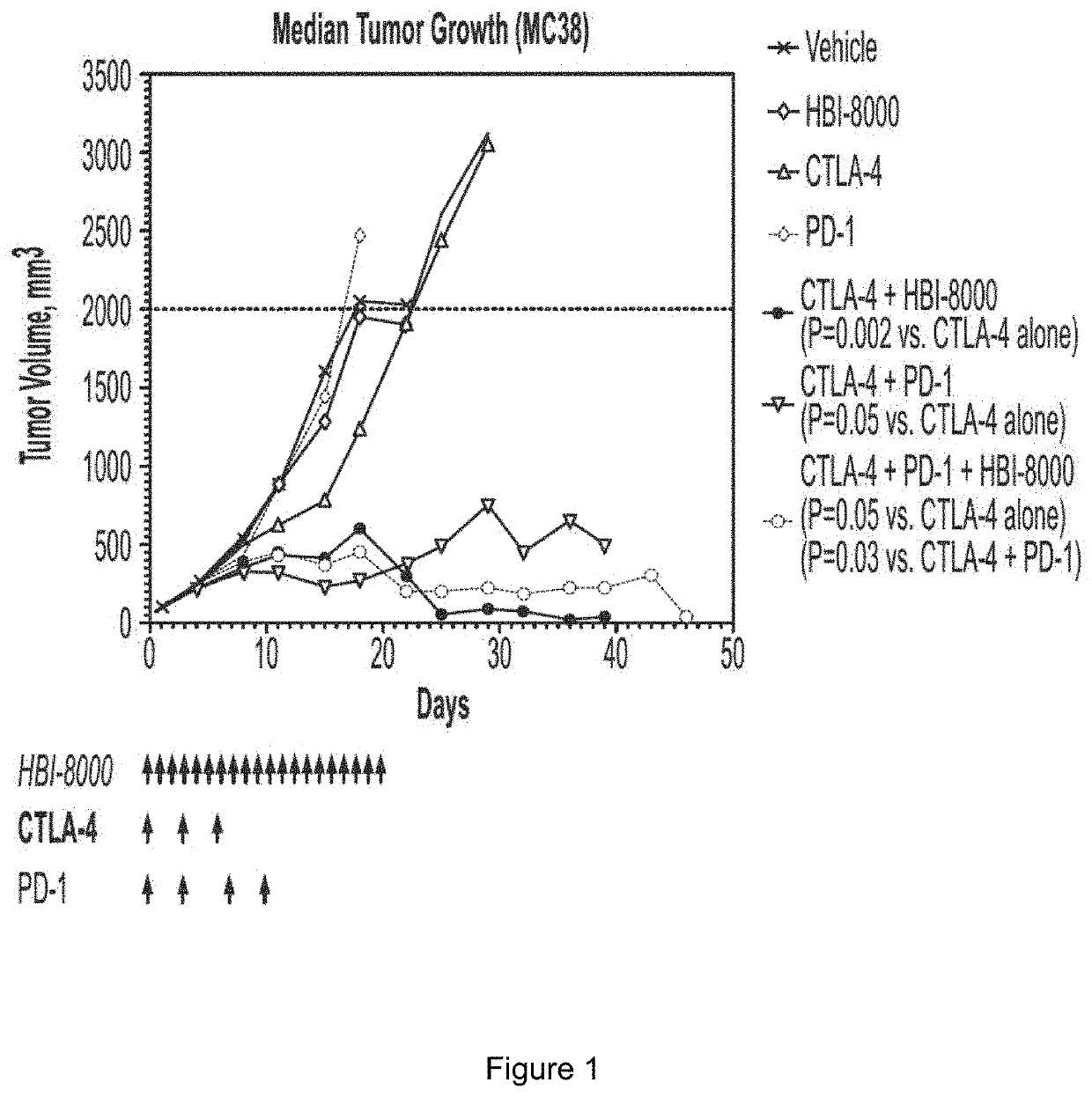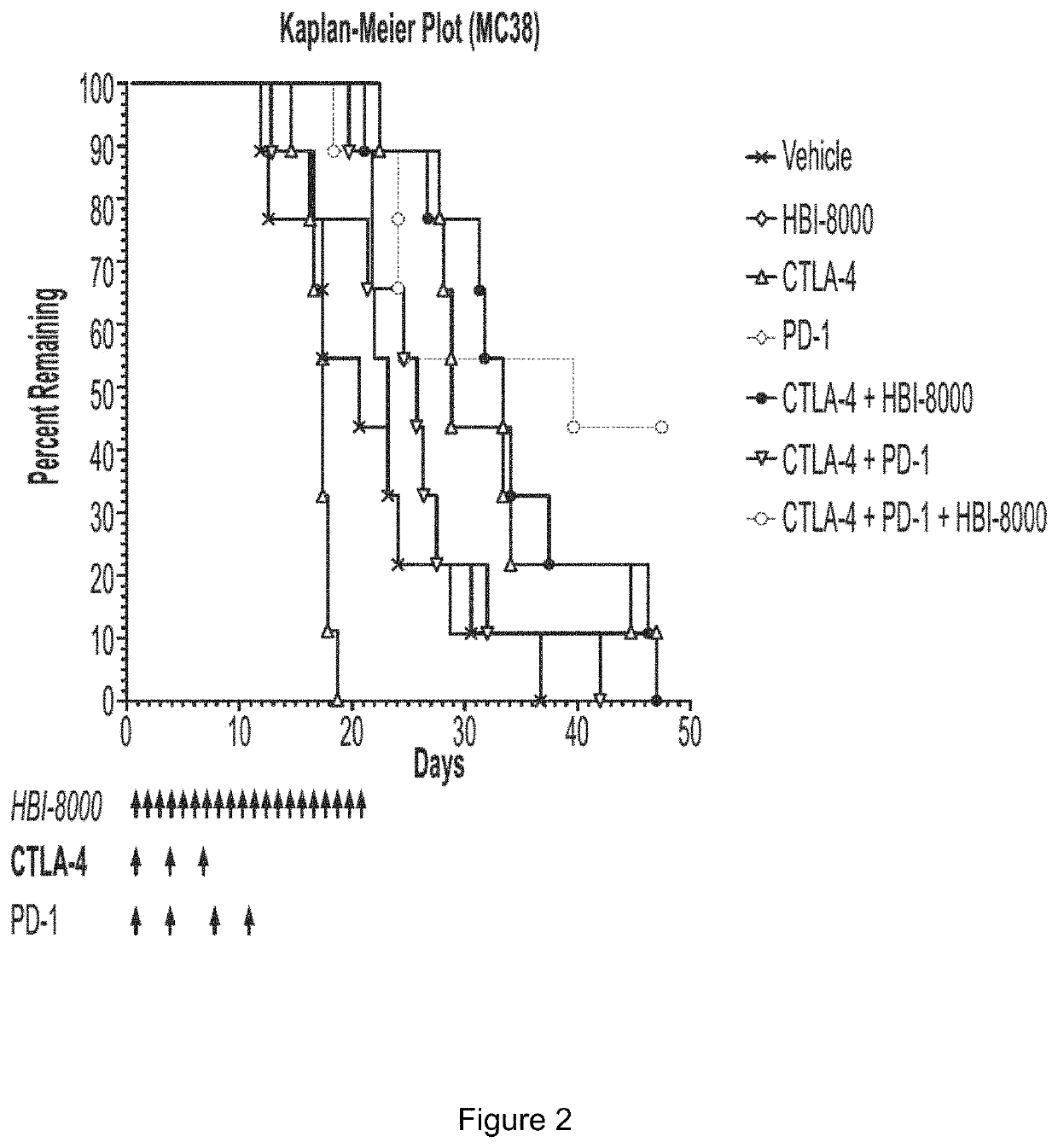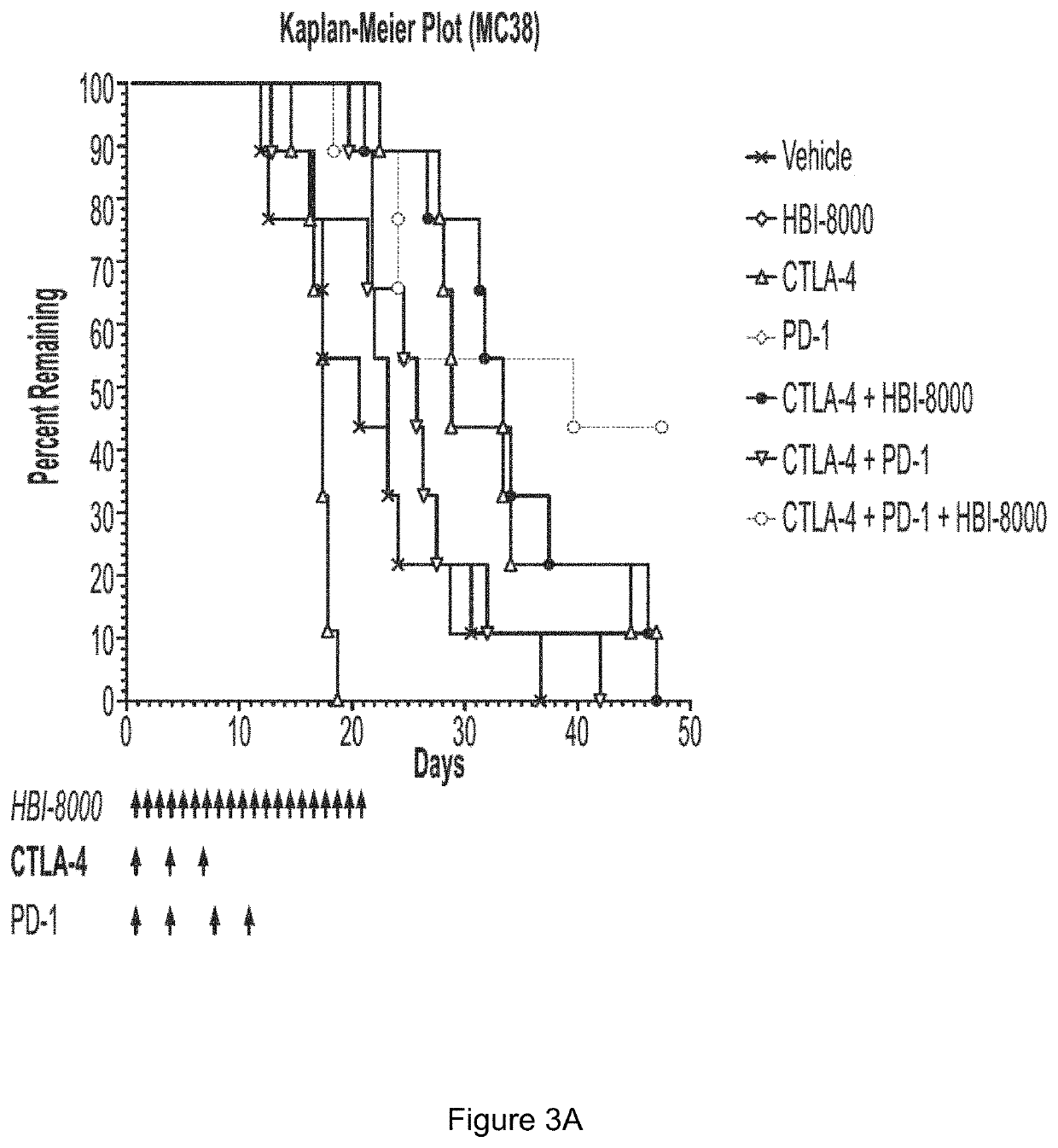Methods and compositions for genetic modulation of tumor microenvironments
- Summary
- Abstract
- Description
- Claims
- Application Information
AI Technical Summary
Benefits of technology
Problems solved by technology
Method used
Image
Examples
example 1
[0308]The rationale for pursuing cancer immunotherapy as a therapeutic option has been driven by a long history of evidence that tumors can be recognized as non-self (similar to immune detection of pathogens like virus-infected cells), rather than as self (normal tissue). The immune system sees tumors as non-self mostly through early detection of molecules displayed on tumor cells that can be recognized as foreign by the immune system, which ideally becomes activated and effectively attacks and eliminates the tumor cells. A number of steps must precede an activated immune response, during which antitumor immune cells can enter (infiltrate) and engage malignant cells within the now immunologically inflamed or “hot” tumor. This is commonly referred to as the Cancer-Immunity Cycle (Chen et al.). Tumor cells however can adapt over time and evade or become resistant to an antitumor immune response. A number of such resistance mechanisms are now known, and the currently approved immunothe...
example 2
[0314]FIG. 3A depicts the probability of progression free survival (“PFS”) in terms of months resulting from a combination therapy comprising compounds of formula I and Nivolumab in melanoma. This probability was generated from the results published in the New England Journal of Medicine showing the PFS for patients treated with Nivolumab monotherapy, ipilimumab monotherapy, or a Nivolumab plus ipilimumab combination therapy. (See FIG. 3B). The “tailing” of the plot in FIG. 3B from the combination therapy suggests a synergistic effect between the Nivolumab and ipilimumab.
[0315]To test this hypothesis, compounds of formula I were administered in combination with Nivolumab to 20 patients suffering from melanoma (“MEL”) (15 of these patients represented 1st line of treatment), 11 patients suffering from renal cell carcinoma (“RCC”), and 13 patients suffering from non-small cell lung cancer (“NSCLC”). Prior to testing, the safety profiles of various dosages of the compounds of formula I...
example 3
[0318]Additional studies were conducted to test the effect of a combination therapy comprising compounds of formula I and nivolumab in melanoma patients with prior immune checkpoint treatment. In these studies, 8 patients were evaluable. 2 of the 8 patients showed PR. 4 of the 8 patients showed SD. Further, the ORR was 25% in this group, while the DCR was 75%. A patient from this study had a tumor that was NRAS positive. Further, the patient had high LDH and an unknown level of PD-L1 expression. This patient had extensive prior treatment including surgery, radiation, ipilimumab+nivolumab, nivolumab maintenance, T-vec and pembrolizumab, TIL+high dose IL-2. This patient achieved a PR in 54 days and was on treatment for over 249 days. This PR is suggestive of epigenetic effects on the tumor. The characteristics and outcome summaries for the patients in this study are summarized in Table 8. Based on these results, combined with the data collected from melanoma-naïve patients (FIG. 5), i...
PUM
| Property | Measurement | Unit |
|---|---|---|
| Time | aaaaa | aaaaa |
| Time | aaaaa | aaaaa |
| Mass | aaaaa | aaaaa |
Abstract
Description
Claims
Application Information
 Login to View More
Login to View More - R&D
- Intellectual Property
- Life Sciences
- Materials
- Tech Scout
- Unparalleled Data Quality
- Higher Quality Content
- 60% Fewer Hallucinations
Browse by: Latest US Patents, China's latest patents, Technical Efficacy Thesaurus, Application Domain, Technology Topic, Popular Technical Reports.
© 2025 PatSnap. All rights reserved.Legal|Privacy policy|Modern Slavery Act Transparency Statement|Sitemap|About US| Contact US: help@patsnap.com



